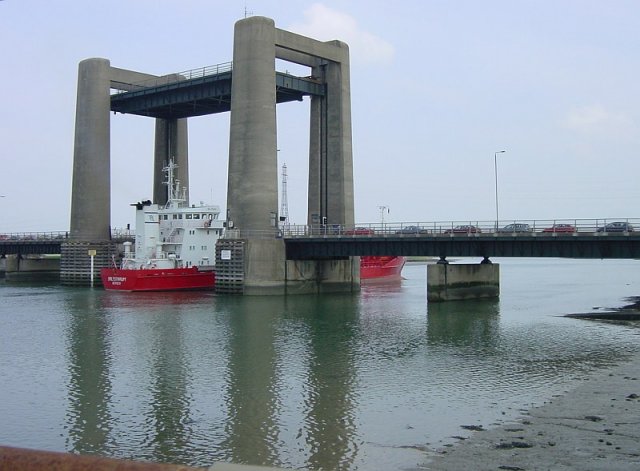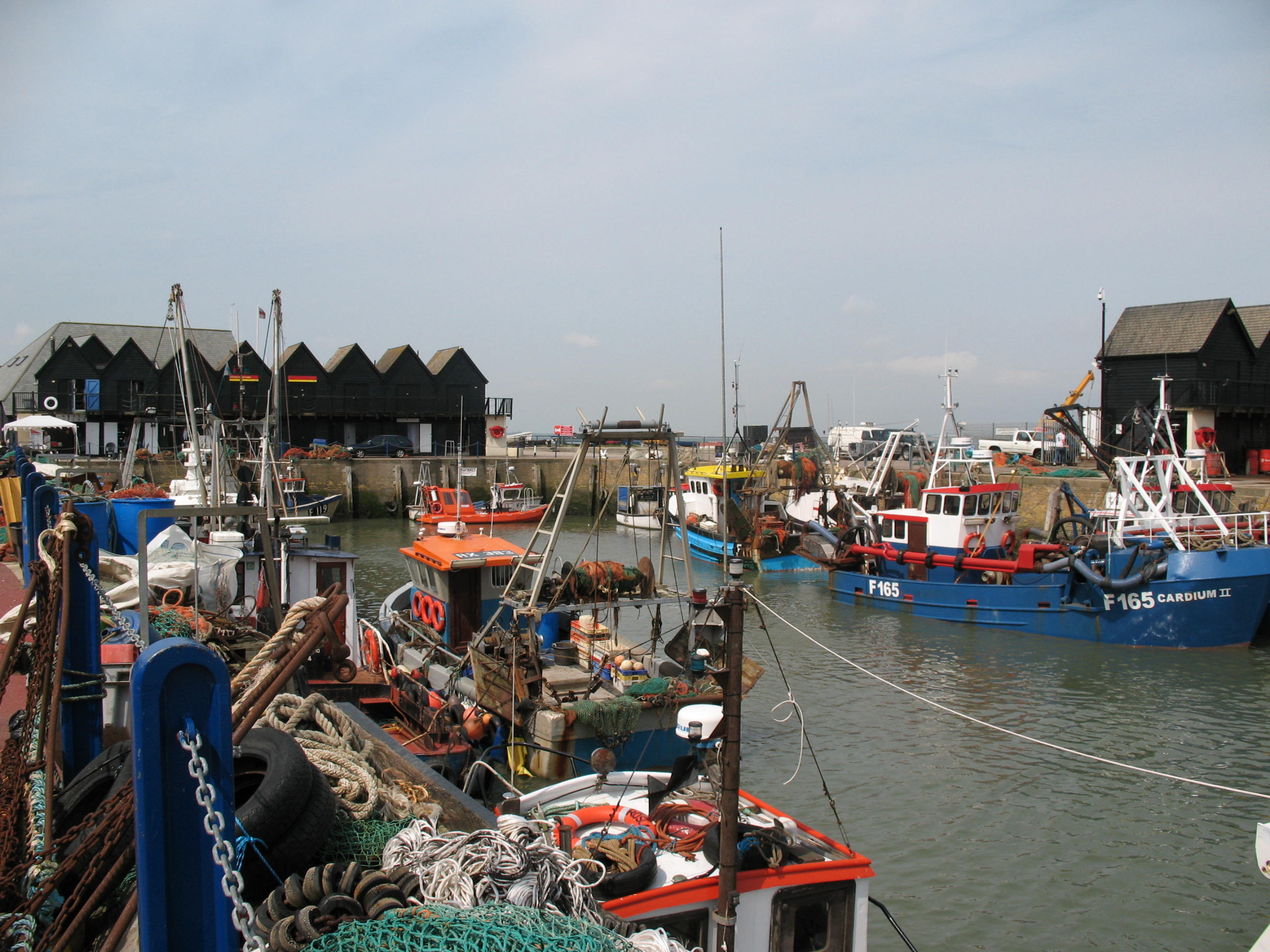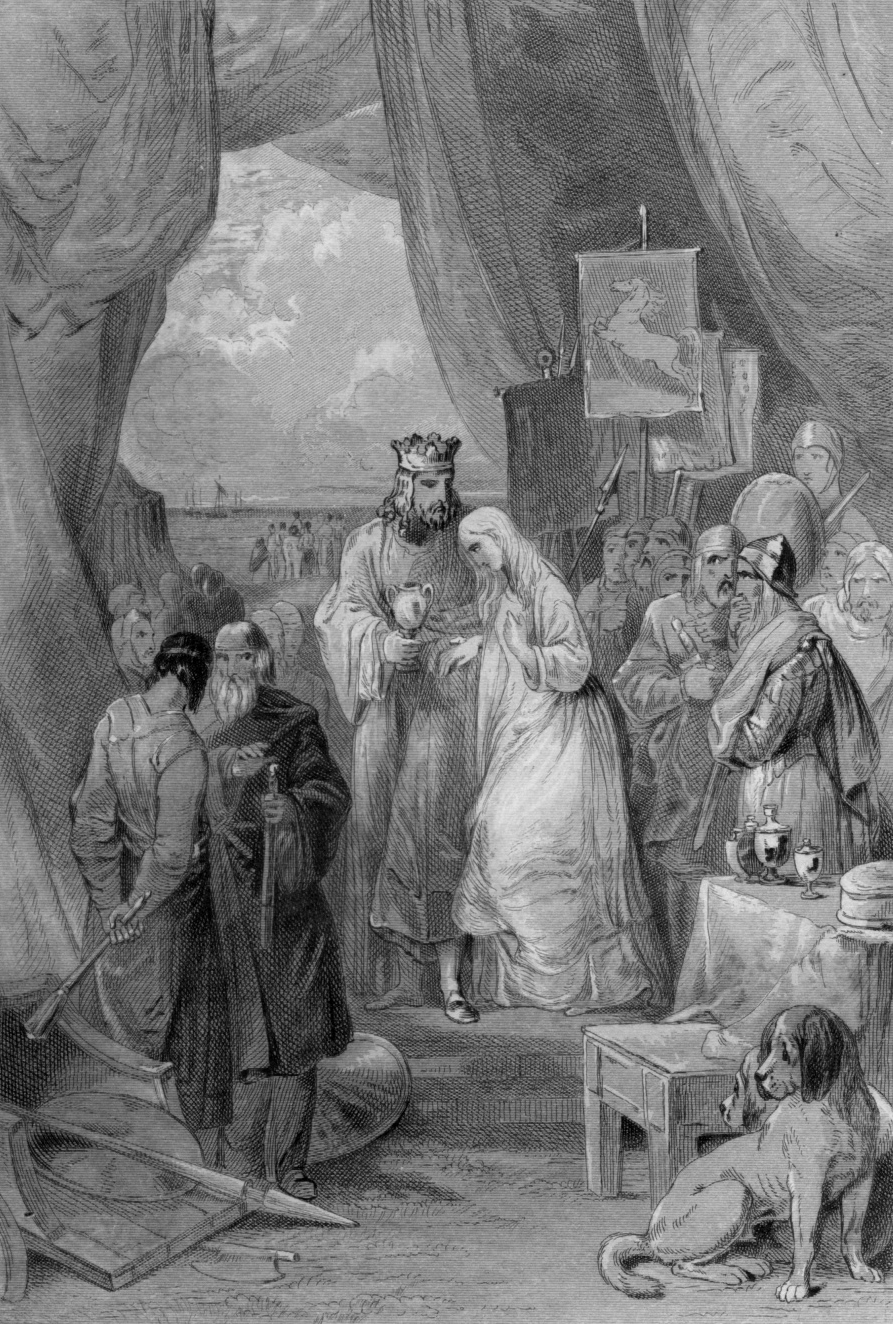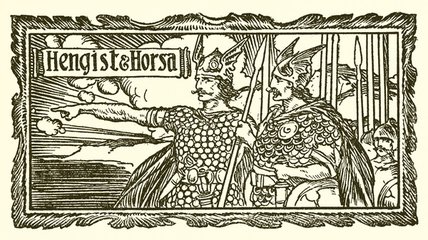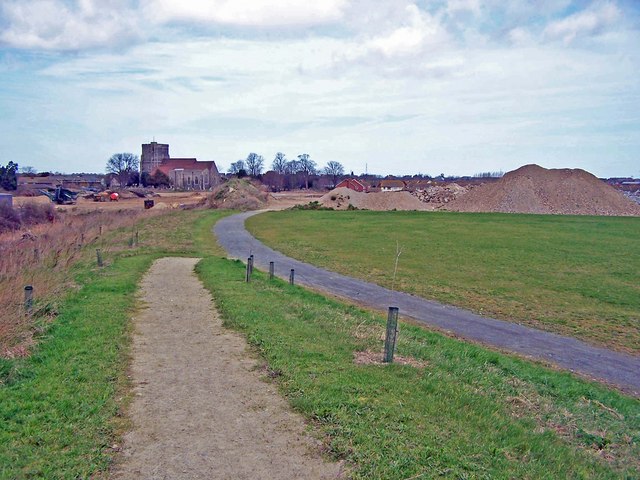|
Milton Regis
Milton Regis is a village in the district of Swale in Kent, England. Former names include Milton-next-Sittingbourne, Milton Royal, Middleton, Midletun and Middletune. It has a population of about 5,000. Today it is a suburb of Sittingbourne, although this has not always been the case, with Milton Regis having an older and richer history. Until around 1800, Sittingbourne was a smaller hamlet and under the control of the Manor of Milton Regis. The ancient settlement was near the church, and the current Milton Regis dates back only to 1052. There are still many timber-framed houses and buildings, including a Medieval Court Hall (a seat of Justice and Administration) that dates back to 1450. The town and Manor of Middleton Regis, as it was called then, was recorded as the largest and most powerful manor in the Lathe of Scraye (in the centre of Kent). Milton Regis was formerly part of the Sittingbourne and Milton urban district. Geography The area occupied by Milton Regis is low-lyi ... [...More Info...] [...Related Items...] OR: [Wikipedia] [Google] [Baidu] |
Borough Of Swale
Swale is a local government district with borough status in Kent, England and is bounded by Medway to the west, Canterbury to the east, Ashford to the south and Maidstone to the south west. Its council is based in Sittingbourne. The district is named after the narrow channel called The Swale, that separates the mainland of Kent from the Isle of Sheppey, and which occupies the central part of the district. The district was formed in 1974 under the Local Government Act 1972, from the Borough of Faversham; the Borough of Queenborough-in-Sheppey, which covered the whole of Sheppey; the Sittingbourne and Milton Urban District; and Swale Rural District. Most of the southern half of the Borough lies within the Kent Downs Area of Outstanding Natural Beauty, whilst Sittingbourne and the Isle of Sheppey forms the concluding part of the Thames Gateway growth area. There are four towns in the borough: Sittingbourne and Faversham on the mainland, and Sheerness and Queenborough on S ... [...More Info...] [...Related Items...] OR: [Wikipedia] [Google] [Baidu] |
Whitstable
Whitstable () is a town on the north coast of Kent adjoining the convergence of the Swale Estuary and the Greater Thames Estuary in southeastern England, north of Canterbury and west of Herne Bay. The 2011 Census reported a population of 32,100. The town, formerly known as Whitstable-on-Sea, was famous for its 'Native Oysters' which were collected from beds beyond the low water mark from Roman times until the mid-20th century. The annual Whitstable Oyster Festival takes place during the summer. In 1830, one of the earliest passenger railway services was opened by the Canterbury and Whitstable Railway Company. In 1832 the company built a harbour and extended the line to handle coal and other bulk cargos for the City of Canterbury. The railway has closed but the harbour still plays an important role in the town's economy. The railway route, known as The Crab and Winkle Line, is now a cycle path which leads to the neighbouring city of Canterbury. History Archaeological finds ... [...More Info...] [...Related Items...] OR: [Wikipedia] [Google] [Baidu] |
Anglo-Saxon Chronicle
The ''Anglo-Saxon Chronicle'' is a collection of annals in Old English, chronicling the history of the Anglo-Saxons. The original manuscript of the ''Chronicle'' was created late in the 9th century, probably in Wessex, during the reign of Alfred the Great (r. 871–899). Multiple copies were made of that one original and then distributed to monasteries across England, where they were independently updated. In one case, the ''Chronicle'' was still being actively updated in 1154. Nine manuscripts survive in whole or in part, though not all are of equal historical value and none of them is the original version. The oldest seems to have been started towards the end of Alfred's reign, while the most recent was written at Peterborough Abbey after a fire at that monastery in 1116. Almost all of the material in the ''Chronicle'' is in the form of annals, by year; the earliest are dated at 60 BC (the annals' date for Caesar's invasions of Britain), and historical material follows up t ... [...More Info...] [...Related Items...] OR: [Wikipedia] [Google] [Baidu] |
Milton-next-Gravesend
Milton-next-Gravesend is an ecclesiastical parish in the north-west of Kent, England, which is now part of the Gravesend built-up area. History Feudal ownership of land in the parish was the subject of a legal action of 1076, ''Abbot Scotland v Hamo the Sherrif'' ic leading to St Augustine's Abbey, Canterbury taking back its stake in ownership.'Houses of Benedictine monks: The abbey of St Augustine, Canterbury', in A History of the County of Kent: Volume 2, ed. William Page (London, 1926), pp. 126-133. British History Online http://www.british-history.ac.uk/vch/kent/vol2/pp126-133 ccessed 28 February 2020 Neighbouring Gravesend became a town under Royal Charter in the 13th century and included Milton. The Church of England's founding was heralded by Henry VIII's split with Rome and the Dissolution of the Monasteries by which all of the abbots were retired, and their institutions' endowments – such as in this parish – were confiscated. Until about the 1840s, much of the ... [...More Info...] [...Related Items...] OR: [Wikipedia] [Google] [Baidu] |
Ecgberht Of Kent
Ecgberht I (also spelled Egbert) (died 4 July 673) was a King of Kent (664-673), succeeding his father Eorcenberht. He may have still been a child when he became king following his father's death on 14 July 664, because his mother Seaxburh was recorded as having been regent. Ecgberht's court seems to have had many diplomatic and ecclesiastic contacts. He hosted Wilfrid and Benedict Biscop, and provided escorts to Archbishop Theodore and Abbot Adrian of Canterbury for their travels in Gaul. The various versions of the Kentish Royal Legend state that, spurred on by his adviser Thunor, he had his cousins Æthelred and Æthelberht (sons of his uncle Eormenred) killed, and so had to pay Weregild to their sister Domne Eafe, enabling her to build a Monastery at Thanet; this may reflect a dynastic struggle that ended in the success of Eorcenberht's line. The two murdered princes were later venerated as saints at Ramsey Abbey in Huntingdonshire. A charter records Ecgberht's patronage ... [...More Info...] [...Related Items...] OR: [Wikipedia] [Google] [Baidu] |
Eorcenberht Of Kent
Eorcenberht of Kent (also Ærconberht, Earconberht, or Earconbert) (died 14 July 664) was king of the Anglo-Saxon kingdom of Kent from 640 until his death, succeeding his father Eadbald. The Kentish Royal Legend (also known as the Mildrith legend) suggests that he was the younger son of Eadbald and Emma of Austrasia, and that his older brother Eormenred was deliberately passed over, although another possibility is that they ruled jointly. According to Bede (''HE'' III.8), Eorcenberht was the first king in Britain to command that pagan " idols" (cult images) be destroyed and that Lent be observed. It has been suggested that these orders may have been officially committed to writing, in the tradition of Kentish law-codes initiated by Æthelberht, but no such text survives. After the death of Honorius, Archbishop of Canterbury, Eorcenberht appointed the first Saxon archbishop, Deusdedit, in 655. Eorcenberht married Seaxburh of Ely, daughter of king Anna of East Anglia. They had ... [...More Info...] [...Related Items...] OR: [Wikipedia] [Google] [Baidu] |
Seaxburh Of Ely
Seaxburh, also Saint Sexburga of Ely (died about 699) was a Queen as well as an abbess, and is a saint of the Christian Church. She was married to King Eorcenberht of Kent. After her husband's death in 664, Seaxburh remained in Kent to bring up her children. She acted as regent until her young son Ecgberht came of age. Seaxburh founded the abbeys at Milton Regis and Minster-in-Sheppey where her daughter Ermenilda was also a nun. She moved to the double monastery at Ely where her sister Æthelthryth was abbess and succeeded her when Æthelthryth died in 679. According to Bede, in 695, Seaxburh organised the movement (or translation) of Æthelthryth's remains to a marble sarcophagus, after they had lain for sixteen years in a common grave. On opening the grave, it was discovered that her body was miraculously preserved. The legend is described in Bede's ''Ecclesiastical History of the English People'', which celebrates the saintly virtues of Æthelthryth, but speaks less high ... [...More Info...] [...Related Items...] OR: [Wikipedia] [Google] [Baidu] |
King Vortigern
Vortigern (; owl, Guorthigirn, ; cy, Gwrtheyrn; ang, Wyrtgeorn; Old Breton: ''Gurdiern'', ''Gurthiern''; gle, Foirtchern; la, Vortigernus, , , etc.), also spelled Vortiger, Vortigan, Voertigern and Vortigen, was a 5th-century warlord in Britain, known perhaps as a king of the Britons or at least connoted as such in the writings of Bede and Gildas. His existence is contested by scholars and information about him is obscure. He may have been the "superbus tyrannus" said to have invited Hengist and Horsa to aid him in fighting the Picts and the Scots, whereupon they revolted, killing his son in the process and forming the Kingdom of Kent. It is said that he took refuge in North Wales, and that his grave was in Dyfed or the Llŷn Peninsula. Gildas later denigrated Vortigern for his misjudgement and also blamed him for the loss of Britain. He is cited at the beginning of the genealogy of the early Kings of Powys. Medieval accounts Gildas The 6th-century cleric and histor ... [...More Info...] [...Related Items...] OR: [Wikipedia] [Google] [Baidu] |
Horsa
Hengist and Horsa are Germanic peoples, Germanic brothers said to have led the Angles, Saxons and Jutes in their invasion of Great Britain, Britain in the 5th century. Tradition lists Hengist as the first of the Jutish kings of Kingdom of Kent, Kent. Most modern scholarly consensus now regards Hengist and Horsa to be mythical figures, and much scholarship has emphasised the likelihood of this based on their alliteration, alliterative animal names, the seemingly constructed nature of their genealogy, and the unknowable quality of the earliest sources of information for their reports in the works of Bede.Halsall (2013:60-62). Their later detailed representation in texts such as the Anglo-Saxon Chronicle can tell us more about ninth-century attitudes to the past than anything about the time in which they are said to have existed.Yorke (1993).Harland (2021:32). According to early sources, Hengist and Horsa arrived in Britain at Ebbsfleet, Thanet, Ebbsfleet on the Isle of Thanet. F ... [...More Info...] [...Related Items...] OR: [Wikipedia] [Google] [Baidu] |
Hengist
Hengist and Horsa are Germanic brothers said to have led the Angles, Saxons and Jutes in their invasion of Britain in the 5th century. Tradition lists Hengist as the first of the Jutish kings of Kent. Most modern scholarly consensus now regards Hengist and Horsa to be mythical figures, and much scholarship has emphasised the likelihood of this based on their alliterative animal names, the seemingly constructed nature of their genealogy, and the unknowable quality of the earliest sources of information for their reports in the works of Bede.Halsall (2013:60-62). Their later detailed representation in texts such as the Anglo-Saxon Chronicle can tell us more about ninth-century attitudes to the past than anything about the time in which they are said to have existed.Yorke (1993).Harland (2021:32). According to early sources, Hengist and Horsa arrived in Britain at Ebbsfleet on the Isle of Thanet. For a time, they served as mercenaries for Vortigern, King of the Britons, but lat ... [...More Info...] [...Related Items...] OR: [Wikipedia] [Google] [Baidu] |
Milton Creek Country Park
Milton Creek Country Park is situated in 128 acres between Milton Regis and Kemsley , on the west bank of Milton Creek in Sittingbourne, Kent, England. This site was once called Church Marshes Country Park. Geography Church Marshes is at the base of Kemsley Down (hills near Kemsley), on the banks of Milton Creek where it flows into the Swale. It is partly due to these two navigable waters which link directly to the River Thames and its estuary across the English Channel to Europe, that marshes formed and gave nearby locations their rich history. The marshes are named after Holy Trinity Church in Milton Regis. (See Milton Regis for more details on the church). History The site of the country park has been used since early times and archaeological evidence shows that Saxon and Roman Britain settlements were present in the vicinity. Holy Trinity Church and Castle Rough are the last remaining local historical features. In the Victorian era the region was used for barge-building ... [...More Info...] [...Related Items...] OR: [Wikipedia] [Google] [Baidu] |
Dover
Dover () is a town and major ferry port in Kent, South East England. It faces France across the Strait of Dover, the narrowest part of the English Channel at from Cap Gris Nez in France. It lies south-east of Canterbury and east of Maidstone. The town is the administrative centre of the Dover District and home of the Port of Dover. Archaeological finds have revealed that the area has always been a focus for peoples entering and leaving Great Britain, Britain. The name derives from the River Dour that flows through it. In recent times the town has undergone transformations with a high-speed rail link to London, new retail in town with St James' area opened in 2018, and a revamped promenade and beachfront. This followed in 2019, with a new 500m Pier to the west of the Harbour, and new Marina unveiled as part of a £330m investment in the area. It has also been a point of destination for many illegal migrant crossings during the English Channel migrant crossings (2018-present) ... [...More Info...] [...Related Items...] OR: [Wikipedia] [Google] [Baidu] |
